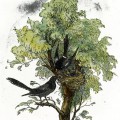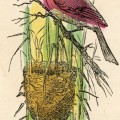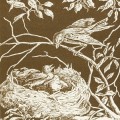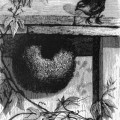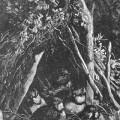Walter Raine (1861-1934) published Bird-Nesting in North-West Canada in 1892. The wonderful illustrations were also by Raine and bear his initials. I’ve not found much information about Raine which is truly a shame considering his talent at illustration. He mentions in his preface that he was only able to work on the text and illustrations after business hours – so one might assume this book was from a hobbyist moreso than a professional ornithologist and naturalist. The book also contained several lovely landscapes of the region.
Raine’s Golden Eagle and Eyrie drawing shows a pair of golden eagles with the nest and a pair of eggs. While golden eagles typically build their nests on the sides of cliffs, they also build them in trees and other high places. They strategically build them where they can view their hunting grounds. As shown in this drawing, they tend to prey upon small mammals. What this picture doesn’t show is how large these nests can be; they can average 5-6 feet wide.
It makes sense that a golden eagle bird nest would be so large considering how large these birds are. A full-grown golden eagle can grow to 40 inches tall and have wingspans around 6 feet to 7 feet 8 inches. Golden eagles mate for life. They generally build multiple eyries and rotate between them season to season. Each time they return to a particular nest, they build upon it. One website said the biggest recorded nest was 20 feet wide and 8.5 feet deep. Clearly our golden eagle bird nest drawing represents a newer nest; perhaps made by a younger pair of birds.
This isn’t the first golden eagle to land on Reusable Art, we have a full-color, vintage golden eagle drawing as well.
Raine’s golden eagle bird nest drawing was a bit of a sleeper. When I first found it, I didn’t realize that it included a green color wash. When I started working with it, the green literally popped out of the picture. I hope you enjoy it.
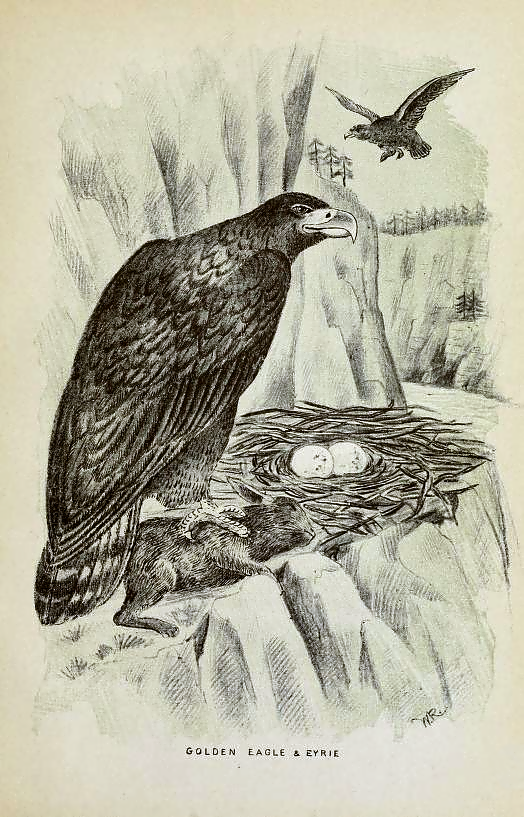
This image is copyright free and in the public domain anywhere that extends copyrights 70 years after death or at least 120 years after publication when the original illustrator is unknown.
